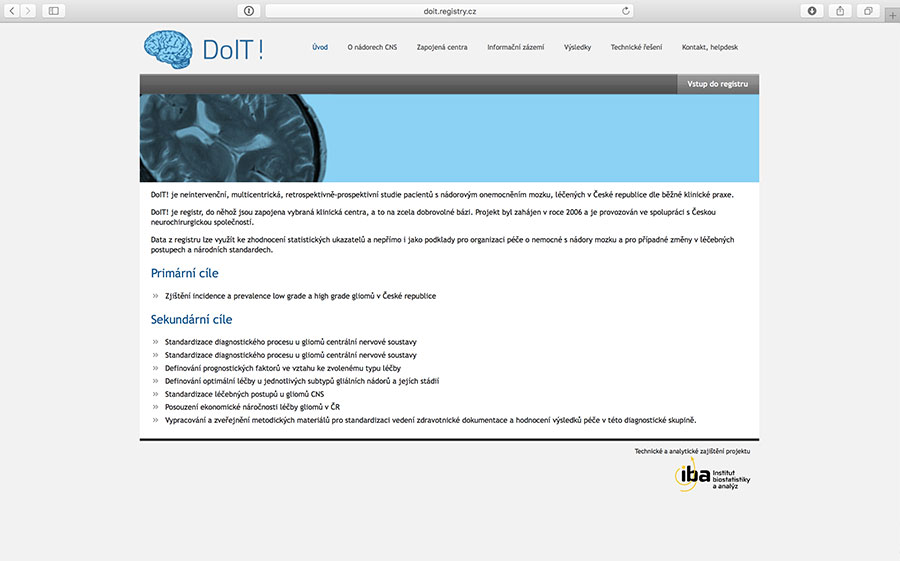
Non-interventional, multicentre, retrospective and prospective study of patients with brain tumours, who have been treated in the Czech Republic according to the common clinical practice.
start of the project: 03/2007
end of the project: 12/2019
The prognosis of patients with brain tumours depends on many factors, such as the histological type of the tumour, whether it can be radically removed either surgically or by irradiation, and whether it is sensitive to chemotherapy.
Primary tumours of the brain account for approximately 1–2% of all cancers, and represent a rather heterogeneous group. In most cases, brain tumours arise from glial cells – non-neuronal cells that provide support and protection for neurons in the brain. These tumours are called gliomas, and account for more than 50% of all CNS tumours. According to certain histological characteristics and behaviour, gliomas can be divided into two groups for simplicity’s sake: low-grade gliomas (i.e., gliomas with a low-grade malignancy) and high-grade gliomas (i.e., gliomas with a high-grade malignancy).
A low-grade glioma typically grows for many years before it becomes clinically manifested. It occurs more frequently in younger age groups (20–40 years). In most cases, the tumour is not well demarcated from the surrounding healthy tissue, and a complete surgical resection is therefore very difficult. On top of that, it can transform to a more aggressive glioma over time.
A high-grade glioma can develop either from a low-grade glioma (this is caused by further genetic mutations within the tumour), or directly from a healthy glial cell. Typical characteristics of high-grade gliomas involve a rapid and aggressive growth (weeks to months), and the occurrence in higher age groups (individuals aged over 50). The tumour is often poorly demarcated, it cannot be completely removed in most cases, and recurrence is rather common.
Primary aim of the project:
- to establish incidence and prevalence rates of low-grade gliomas and high-grade gliomas in the Czech Republic.
Secondary aims of the project:
- to standardise the diagnostic process for gliomas affecting the central nervous system,
- to define prognostic factors in relation to the treatment of choice,
- to define optimal treatment strategies for individual subtypes of gliomas and different stages,
- to standardise treatment procedures for gliomas affecting the central nervous system,
- to evaluate the economic demands on treatment of gliomas in the Czech Republic,
- to develop and to publish methodical materials which would contribute to the standardisation of medical records and to the evaluation of treatment outcomes in this diagnostic group; the documentation might also be useful in other areas of cancer care.
Other important information:
- Expert guarantor: Petr Kramář, M.D.
- Funding: Schering-Plough, s.r.o.
- Partners: 18 selected centres in the Czech Republic dealing with the treatment of brain tumours (you can find more detailed information – in Czech language – on the website of the DoIT! project)
- Anaesthesiology, intensive care medicine
- Cardiology, angiology
- Diabetology, dietetics
- Educational projects
- Emergency medicine, toxicology
- Endocrinology, metabolism
- Gastroenterology, hepatology
- Haematology, haematological oncology
- Immunology, allergology
- Medical genetics
- Nephrology
- Neurology, neurosurgery
- Nursing care
- Obstetrics, gynaecology
- Oncology, radiotherapy
- Ophthalmology
- Paediatrics, neonatology
- Pathology, laboratory medicine
- Pulmonary medicine
- Rheumatology, physiotherapy
- Screening programmes
- Surgery, traumatology, orthopaedics
- Urology
